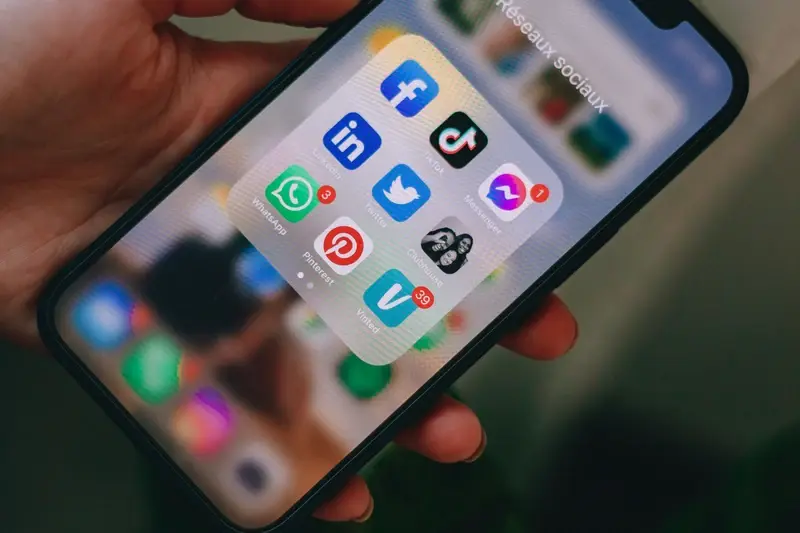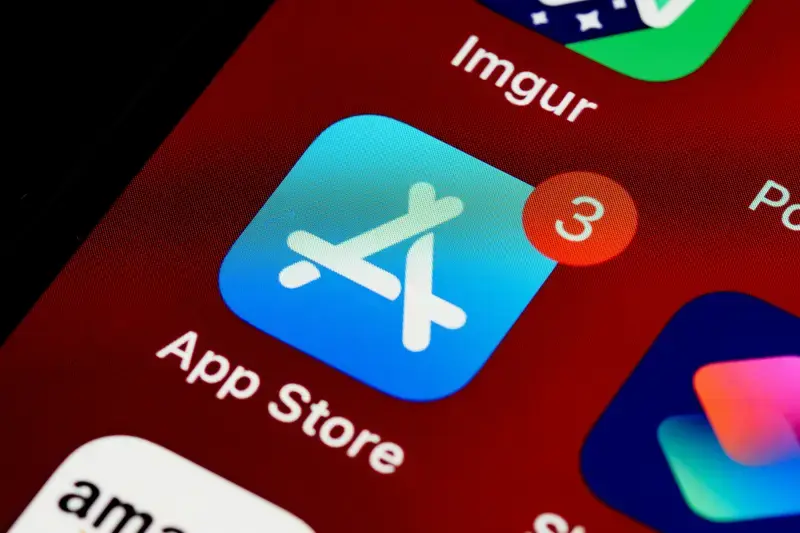How Long Does App Store Approval Take?
Submitting your app to the App Store is a bit like waiting for exam results - exciting and nerve-wracking all at once. Whether you're a seasoned developer or launching your first app, understanding the App Store approval process is crucial for a smooth journey from submission to launch.
As app developers who've guided hundreds of apps through this process since 2015, we know firsthand the anticipation and questions that surge through your mind: "How long will it take?" "What if something goes wrong?" "Have I missed anything important?" These are all perfectly normal concerns, and we're here to help you navigate them.
The path to App Store success begins with understanding the journey, not just focusing on the destination.
The App Store review process isn't just a simple checkbox exercise - it's Apple's way of ensuring that users get high-quality, secure, and reliable apps. Think of it as a quality control checkpoint, much like the careful inspection a luxury car undergoes before leaving the factory. While this process might seem daunting at first, having a clear understanding of what to expect can make it far less stressful.
In this comprehensive guide, we'll walk you through everything you need to know about the App Store approval process. From typical waiting times to common rejection reasons, and from submission preparation to tracking your app's status - we'll cover it all in clear, straightforward terms. By the end, you'll have a solid grasp of what lies ahead and how to position your app for the best chance of swift approval.
Understanding App Store Review Guidelines
If you've ever tried to assemble flat-pack furniture without instructions, you'll know the frustration of not having clear guidelines to follow. The App Store review process can feel similarly daunting without proper understanding of Apple's requirements.
The Foundations of App Store Guidelines
Think of Apple's guidelines as a quality control checklist that ensures every app provides a safe, reliable experience for users. After reviewing thousands of apps over our eight years in development, we've found that Apple's guidelines typically focus on five core areas: safety, performance, business practices, design, and legal requirements.
Key Requirements to Consider
Just as a restaurant must meet health and safety standards, your app must meet Apple's standards. These include ensuring your app doesn't crash or contain inappropriate content, provides clear privacy policies, and delivers the features promised in your description. Remember, Apple's primary concern is protecting its users - much like how a good parent checks their child's Halloween sweets before letting them dive in!
One often-overlooked aspect is the requirement for apps to offer genuine value to users. This means your app should solve a specific problem or provide entertainment in a unique way. We've noticed that apps that merely replicate existing solutions without adding anything new often face longer review times or rejection.
While the guidelines might seem overwhelming at first (they're currently over 11,000 words long!), don't let that put you off. Think of them as your roadmap to success rather than obstacles to overcome. Understanding these guidelines thoroughly before development can save you countless hours and potential frustrations during the review process.
Typical App Store Review Timelines
If you're eagerly refreshing your email every five minutes waiting for App Store approval, you're not alone! The review process can feel a bit like waiting for a kettle to boil - except this kettle might take a few days to get going.
Apple App Store Timeline
For the Apple App Store, the typical review process takes between 24-48 hours. However, just like British weather, it can be rather unpredictable. We've seen some apps sail through in just a few hours, while others might take up to a week. During busy periods, like the run-up to Christmas when developers are rushing to get their holiday updates out, the wait times can stretch a bit longer.
Google Play Store Timeline
Google Play Store typically moves a bit quicker, with most apps being reviewed within 24 hours. However, more complex apps or those requiring additional security reviews might take up to three days. It's worth noting that new developer accounts often face longer review times for their first few submissions - think of it as a trust-building period.
Remember that these timelines apply to both new apps and updates to existing apps. However, updates to existing apps with a good track record often move through the queue more quickly, particularly if they're minor changes.
When planning your app launch, always add an extra 3-4 days buffer to your timeline. It's better to launch early than to disappoint users with delays because of unexpected review complications.
Common Reasons for App Store Rejection
Getting your app rejected by the App Store can feel like a punch to the gut - we've seen countless developers experience this setback in our 8+ years of app development. The good news is that most rejections are preventable once you understand the common pitfalls.
Technical Issues
Just like making sure your shoes are properly tied before a race, technical fundamentals are crucial. We frequently see apps rejected due to crashes and bugs, incomplete information, or broken links. It's rather like sending a wobbly table to a furniture shop - the basics need to be solid before anything else matters.
Content and Compliance Concerns
The App Store takes content guidelines seriously - think of them as the highway code for apps. Common rejection triggers include inappropriate content, misleading descriptions, or insufficient privacy policies. We've noticed that apps requesting unnecessary user data often face rejection - it's like asking for someone's life story when you just need their name!
Other frequent stumbling blocks include poor user interface design, missing age ratings, or payment systems that don't comply with Apple's guidelines. Interestingly, we've found that even seemingly minor issues like placeholder text left in screenshots or missing support information can lead to rejection.
Remember, receiving a rejection isn't the end of the world - it's more like a red pen marking on your homework. Nearly every successful app developer has faced rejection at some point. The key is understanding these common issues and addressing them before submission. In our experience, careful attention to these details can significantly improve your chances of first-time approval.
How to Speed Up the Review Process
We understand how nerve-wracking it can be waiting for your app to be approved. After months of development, you're eager to get your creation into users' hands. Whilst we can't completely bypass Apple's thorough review process (nor would we want to!), there are several proven ways to help your app sail through more quickly.
Pre-submission Checklist
Think of this like preparing for a driving test - the more prepared you are, the smoother things will go. Start by thoroughly testing your app on different devices and iOS versions. We've seen countless apps get stuck in review simply because they crashed on an iPad when they were only tested on iPhones. Double-check that all your links work, your privacy policy is up-to-date, and your app's metadata is complete and accurate.
The fastest path through App Store review is to submit an app that's already prepared for success
Clear Communication is Key
If your app has any special requirements or unique features, don't make the reviewers guess. Provide detailed notes in the 'Review Notes' section explaining any specific test accounts, login credentials, or special steps needed to review your app properly. It's like giving someone directions to your house - the clearer you are, the faster they'll get there!
A brilliant trick we've learned over our eight years of submissions is to include a brief demo video showing your app's core functionality. This helps reviewers understand your app quickly and can significantly reduce the time they spend testing. Just ensure your app matches exactly what's shown in the video - any discrepancies will only lead to delays.
Preparing Your App for Submission
After months of development and testing, you're finally ready to submit your app to the App Store. We know this feeling all too well - it's like preparing for a job interview where you want everything to be perfect. Let's ensure your submission goes as smoothly as possible.
Think of app submission like packing for a holiday - you need a thorough checklist to ensure nothing gets left behind. From our experience helping hundreds of developers navigate this process, we've identified the essential elements that need your attention.
Essential Submission Checklist
- App metadata (name, description, keywords, and category)
- High-quality screenshots for all required device sizes
- App icon in all necessary dimensions
- Privacy policy and support URL
- Age rating information
- Marketing opt-in materials (if applicable)
- Test account credentials (if your app requires login)
- App Store promotional text (up to 170 characters)
One often overlooked aspect is the beta testing documentation. Just like keeping your receipts for tax season, maintaining clear records of your testing process can prove invaluable during review. We've seen many cases where Apple's review team specifically requested additional testing information.
Remember to double-check your app's performance on different devices. It's quite similar to trying on clothes in different lighting - what looks perfect on your development device might appear differently on others. Taking time to prepare thoroughly now can save you from the frustration of rejection later.
Tracking Your App's Review Status
Once you've submitted your app, the waiting game begins - and we know from experience how nerve-wracking this can feel! Fortunately, Apple and Google provide straightforward ways to monitor your app's journey through the review process.
Using App Store Connect
For iOS apps, you can track your submission status through App Store Connect. Simply log in to your developer account and head to the 'App Store' tab of your app. You'll see your app's current status displayed prominently - rather like tracking a parcel delivery, but considerably more exciting! Common statuses include 'Waiting for Review', 'In Review', and hopefully soon, 'Ready for Sale'.
Google Play Console Updates
Android developers can monitor their app's progress through the Google Play Console. The review status appears under the 'Release' section, where you'll find detailed information about which stage your app is currently in. Google's process tends to be more automated, but it's still reassuring to watch your app move through the various checkpoints.
Both platforms will send you email notifications about significant status changes, but we've found it's quite addictive to keep checking the developer portals - rather like repeatedly opening the fridge when you're waiting for a cake to chill!
Set up email notifications on a dedicated folder in your inbox to ensure you never miss important updates about your app's review status. This is particularly useful if you're managing multiple apps simultaneously.
Remember, seeing your status stuck on 'In Review' for what feels like ages is completely normal - no need to panic! Use this time wisely to prepare your marketing materials and perhaps start planning your next update.
What to Do if Your App Gets Rejected
Getting your app rejected can feel like a punch to the gut, especially after all the hard work you've put into it. Having guided hundreds of developers through this process, we know that initial rejection isn't the end of the road - it's simply a detour on your journey to the App Store.
Stay Calm and Read Carefully
First things first: take a deep breath. Apple's review team always provides specific reasons for rejection, much like a teacher's feedback on homework. Read their feedback thoroughly - they'll typically point out exactly what needs fixing, whether it's a technical bug, content issue, or metadata problem.
Address Issues and Resubmit
Once you understand the reasons for rejection, make a checklist of everything that needs addressing. It's rather like following a recipe - tick off each ingredient as you go. Sometimes it might be as simple as updating your privacy policy, while other times you might need to rework certain features.
When you're ready to resubmit, don't forget to include notes in the Resolution Centre explaining what changes you've made. Think of it as writing a cover letter - you want to clearly communicate how you've addressed their concerns. We've found that being transparent and professional in your communication significantly improves your chances of approval on the second submission.
Remember, even popular apps like WhatsApp and Facebook have faced rejection at some point. If you're stuck or unsure about how to proceed, Apple's Developer Support team is surprisingly helpful - rather like having a friendly IT expert on speed dial. The key is to remain patient and persistent; most apps make it through after one or two revisions.
Best Times to Submit Your App
When it comes to submitting your app to the App Store, timing really can make a difference. Just like avoiding rush hour traffic on your morning commute, choosing the right moment to submit your app can potentially influence how quickly it moves through the review process.
Peak vs Off-Peak Submission Times
From our experience helping hundreds of clients navigate the App Store submission process, we've noticed that review times tend to be longer during certain periods. The busiest times typically coincide with major iOS releases (usually September-October), the pre-holiday rush (November-December), and immediately after extended holiday periods when there's a backlog of submissions.
The art of app submission isn't just about what you submit, but when you submit it - timing can be the difference between a swift approval and a lengthy wait
Strategic Submission Windows
We've found that mid-week submissions (Tuesday through Thursday) often see the quickest turnaround times. Weekend submissions typically don't start being reviewed until Monday, which means you're already behind in the queue. Similarly, submitting during working hours rather than midnight can be advantageous, as your app enters the review queue during active reviewing hours.
January through March often presents an excellent window for submissions, as the holiday rush has passed and review teams are operating at full capacity. However, remember that these patterns aren't set in stone - Apple's review team works year-round, and a well-prepared submission is more important than perfect timing.
If you're planning a specific launch date, we recommend submitting at least two weeks before your target date, regardless of the time of year. This buffer allows for any potential rejection and resubmission cycles without derailing your launch plans.
Conclusion
Getting your app through the App Store approval process can feel like waiting for exam results - a bit nerve-wracking and seemingly endless at times. However, armed with the right knowledge and preparation, you can navigate this journey with confidence and optimise your chances of success.
Throughout this guide, we've explored the essential aspects of App Store approval, from understanding Apple's guidelines to managing review timelines and addressing potential rejection scenarios. Remember, the review process isn't meant to be a barrier but rather a quality control measure that helps maintain the App Store's high standards and protects users - something we can all appreciate as app users ourselves.
After helping hundreds of clients through the submission process over the past eight years, we've learned that patience and attention to detail are your best allies. Whether you're submitting your first app or your fiftieth, each submission is an opportunity to refine your process and learn something new.
Most importantly, don't let the fear of rejection hold you back. Even if your app does get rejected, remember it's not the end of the road - it's simply part of the journey. Take the feedback onboard, make the necessary adjustments, and try again. The App Store review team wants to see great apps succeed just as much as you do.
By following the guidelines and best practices we've shared, you'll be well-equipped to navigate the approval process successfully. Remember, every successful app in the App Store has gone through this same journey. Your next great app launch is just around the corner - best of luck with your submission!
Share this
Subscribe To Our Learning Centre
You May Also Like
These Related Guides

What Is the Apple App Store Approval Process?

Can I Update My App After Its In The App Store?



